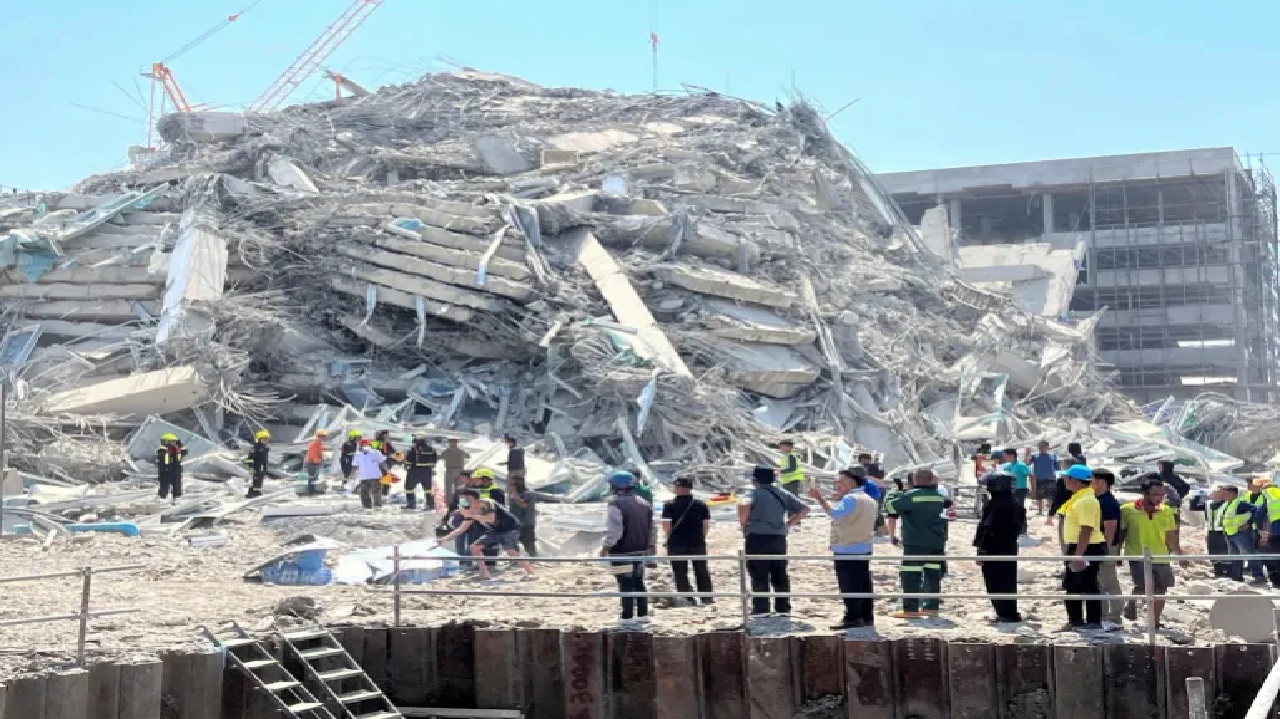A Region Prone to Seismic Activity
Myanmar, situated in a seismically active region, has frequently experienced devastating earthquakes due to its position along multiple fault lines. Over the past decades, tremors have caused significant destruction and loss of life, with cities like Mandalay and Yangon often bearing the brunt of seismic activity. The latest catastrophe—a powerful 7.7-magnitude earthquake followed by strong aftershocks—has once again underscored the vulnerability of this region to natural disasters.
The Disaster: A Massive Quake Strikes Myanmar
On Friday afternoon, a powerful 7.7-magnitude earthquake struck central Myanmar, near Sagaing, sending shockwaves through the country and beyond. Hours later, a strong 6.7-magnitude aftershock further exacerbated the devastation. The quake caused widespread destruction, with entire buildings, bridges, and roads collapsing under the impact. Mandalay, Myanmar’s second-largest city, was among the hardest-hit areas, with significant structural damage reported across the city.
According to official reports from Myanmar’s ruling junta, the death toll has exceeded 1,000, with over 2,000 people injured. The true extent of the disaster remains uncertain, as communication disruptions and infrastructure damage have hampered information flow.
Widespread Destruction and Human Cost
In Mandalay, a centuries-old Buddhist pagoda was reduced to rubble, highlighting the cultural loss accompanying the human tragedy. A local monk lost his life when a monastery collapsed. Fearing further tremors, many residents have opted to sleep outdoors, avoiding unstable buildings. Mandalay Airport also sustained significant damage, complicating already strained relief efforts.
To address the crisis, Myanmar’s junta declared a state of emergency in six severely affected regions and made an unusual appeal for international aid. Countries such as India and China have promptly responded, dispatching emergency supplies and rescue teams to assist with relief operations.
Impact in Thailand: Bangkok Also Feels the Tremors
The earthquake’s impact extended beyond Myanmar, with Bangkok, Thailand’s capital, experiencing significant tremors. A 30-story building under construction collapsed, killing at least 10 people. Rescuers continue searching for up to 100 workers feared trapped beneath the rubble.
Authorities in Bangkok have received over 2,000 reports of damage, with engineers and safety officials conducting inspections across the city. Dramatic scenes unfolded as rooftop swimming pools overflowed and hospitals were forced to evacuate patients. In a desperate move, some medical teams even completed surgeries outdoors.
Rescue Efforts and International Response
Rescue operations are underway in both Myanmar and Thailand as authorities assess the full scale of the disaster. Emergency teams are working tirelessly to locate survivors, provide medical aid, and restore essential services. However, logistical challenges, damaged infrastructure, and ongoing civil unrest in Myanmar have made relief efforts particularly difficult.
International humanitarian organizations and neighboring countries have pledged support, recognizing the urgent need for aid. Myanmar’s rare call for international assistance underscores the gravity of the situation.
A Devastating Reminder of Nature’s Power
The 7.7-magnitude earthquake that struck Myanmar and its effects in Thailand serve as a stark reminder of the unpredictable power of nature. As rescue operations continue and communities begin the long process of rebuilding, this disaster highlights the need for improved disaster preparedness, resilient infrastructure, and coordinated international response mechanisms. The resilience of the affected populations will be crucial in overcoming the challenges posed by this catastrophic event.
(With inputs from agencies)








